Tillandsia fasciculata
Click thumbnails for full size, scaled to a new window.
Tillandsia fasciculata
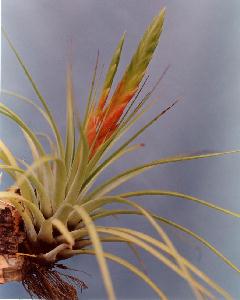
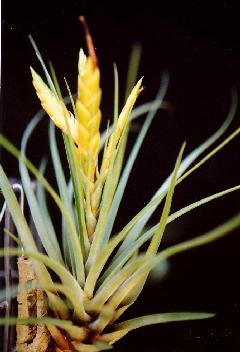
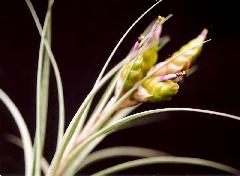
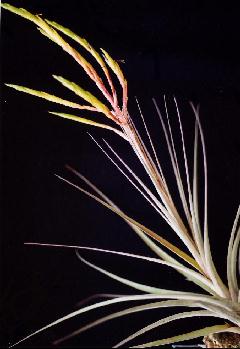
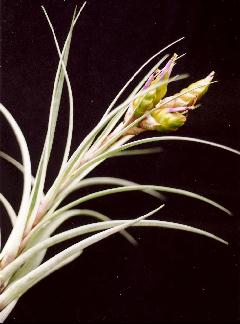
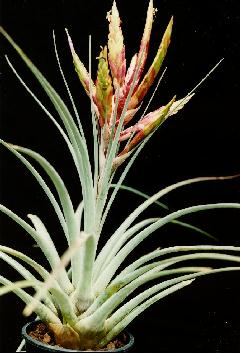
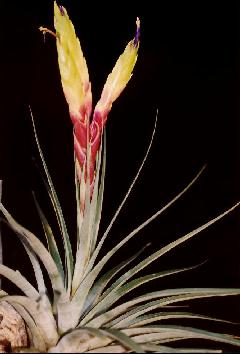
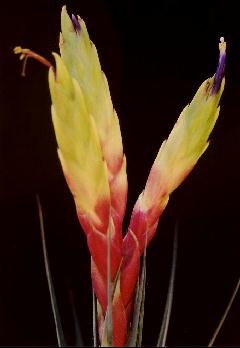
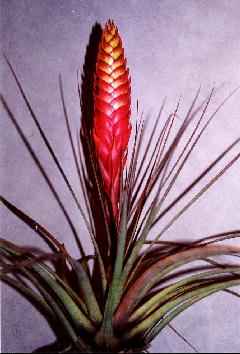
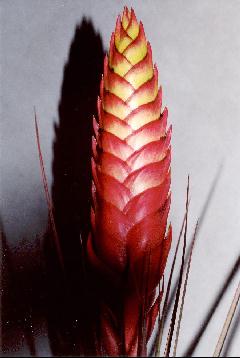


| Ken Woods cv 'Alec'. |
Ken Woods, Yellow variety. |
Ian Hook 08/08 |
---From Ken, re- current 'Alec' discussion...
"The 'photo of Alec. Derek refers to is not my plant, I took the 'photos at the Illawarra Conference many
years ago, the plant came up for auction & was purchased by Richard Cornale who is a Member of our Group.
He may remember who donated it & its origin. These clues may jog the memories of other Nutters who were also at that Conference."




| Mark Supple, Labelled "Orange variety". |
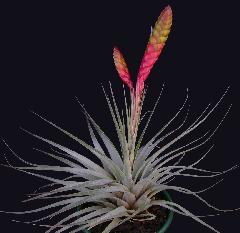
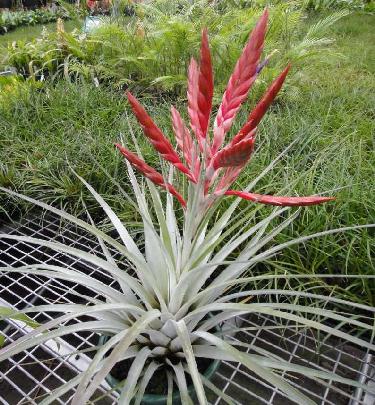
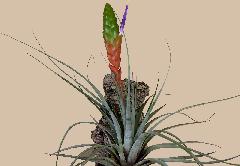

| Chris Larson, "Corsa". Unregistered variety imported '07 from Corsa S.A. (P/L) in Guatemala. |
Chris Larson, "Percal". Unregistered cultivar from Costa Rica. "Pam Koides best". |
Mark Supple 12/09. Originally purchased as unregistered variety tricolor (which is in Australia) but unfortunately not. |
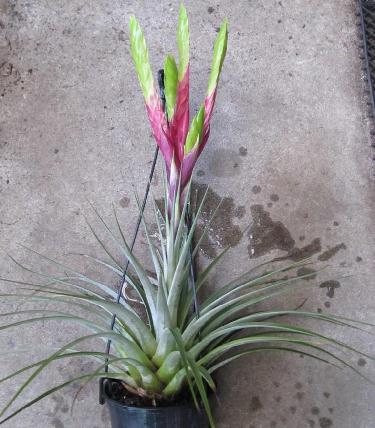

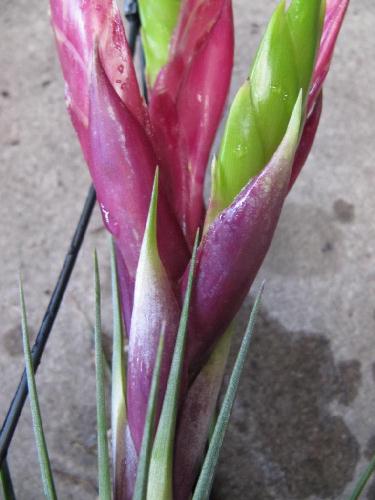
| Chris Butler 06/11. Purple type ex.Bruce Dunstan. |

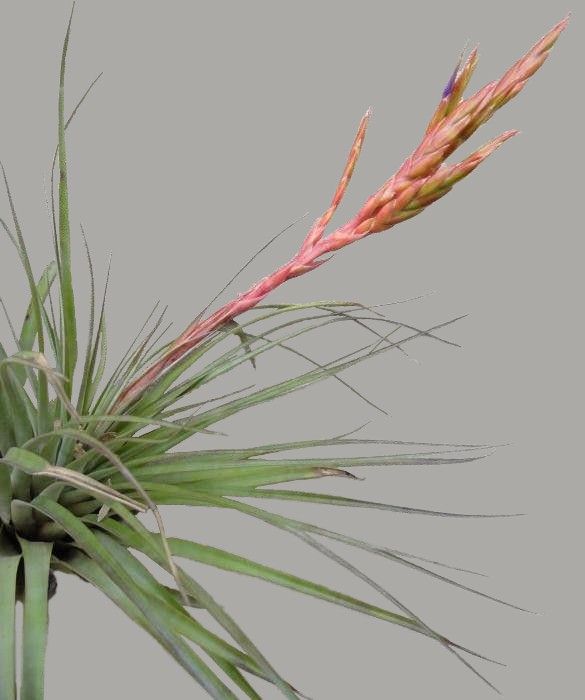
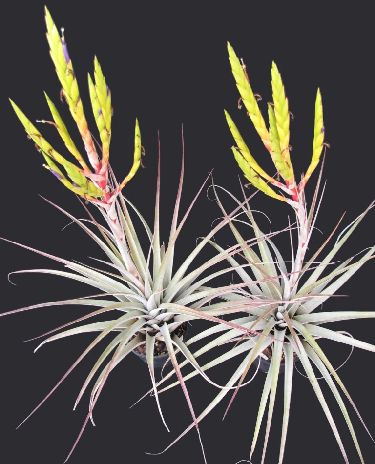
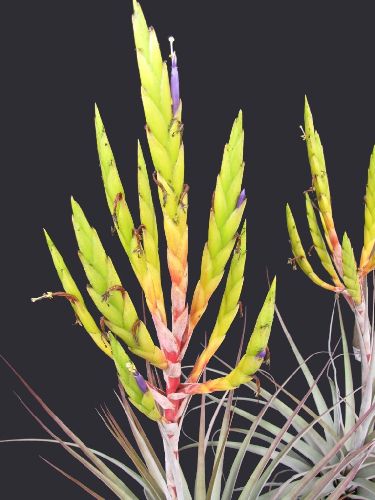
| Bob Hudson 12/12, "Percal". Unregistered, Costa Rica. |
Chris Larson 11/10* var. densispica ? |
Johm Olsen 12/12. var clavispica |
*Chris Larson... "This is another of Len Summers’ plants. As I understand it they came from one of our Guate import competitors as T. fasciculata var densispica. The apparent bicolor flower is just due to the flower dying at the tip – was just blue. This plant has got ‘around’. Is it densispica?

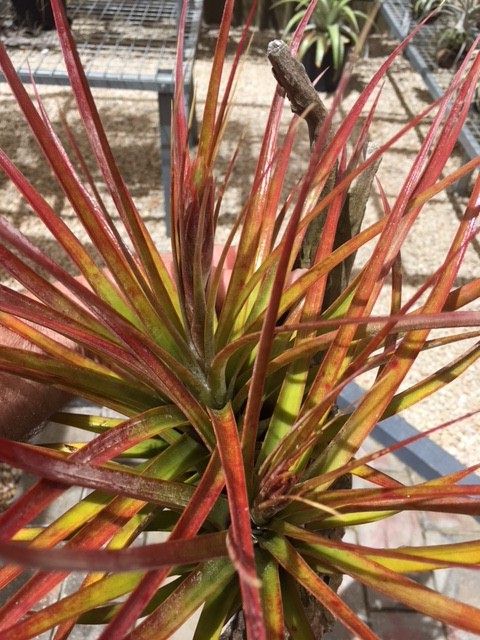


| *Peter Tristram 07/15, var. clavispica Trinidad* |
Ray Clark 11/17, var. clavispica Trinidad* |
George Nieuwenhoven 03/18 as 'Honduras'* ?? |
Chris Larson 01/19 "Club Spike" |
*Peter Tristram ... "This one is labelled 'Trinidad' by Lydia. The original plant nearly died in quarantine but the pups are doing well. I wonder if this ‘variety’ will get elevated to species in the current reviews. There is plenty of variation in the Cuban forms of var. clavispica as well, though the plants and their spikes all have a similar habit. Maybe there’s some utriculata or similar in their past?!
George Nieuwenhoven ... "This T. fasciculata came to me via Adam Bodzioch as T. fasciculate Honduras*, it’s not in flower yet but I thought it was worth uploading a photo anyway, not sure what name it actually comes under but I am happy for any input. From memory I think that Len Colgan and I both imported this fasciculata from Germany some years ago. Len’s is a bit different to mine."
Chris Larson ... "Another I have had for quite some time – ex-Guatemala. Parted with quite a few as T. fasciculata 'Club Spike'. In flower today – not registered."


| Peter Tristram 12/10, 'Chacalapa' Mexico. |
John Olsen 01/20 'Chacalapa' |
John Olsen ... "Been good this year. Had a few flower with large branched inflorescence and good colour."
Derek Butcher ... "Nobody has bothered to formally name Chacalapa and its history just as we recently did for Narvaez' Perhaps someone will bite the bullet."
Chris Larson ... "All these come from Bird Rock imports. Mine all were sold with Pam's T. .... number - they are at work so I can't tell you now - but you can almost read it on Peter's tag above.
Note the colour on Peter's is slightly different to John's. John's is almost the same as mine - most likely the same plant. Peter's came from Adam - & I'm not sure where Adam's came from- me or Len Colgan or ... ? I think George also imported it. The plant on Pam's web page is more red - possibly climatic.
The ex-Chacalapa plants didn't have white petals, Rob.
I don't really see the need to register a plant with a locality name - unless it is not conforming to the species. Register it under 'Chacalapa' and people will say - oh close enough, we will label it that, and the name no longer has significance.
There's a good bit of it around."
Peter Tristram ... "I got my plant of this neat species from Len, ex BRT. Few have been spread from me though. It’s a place name, as Chris said and probably not really in the new fasciculata fold."
Ross Little 23/12/13 Chris: This is the plant I mentioned to you today I have tagged as T. 'Percal'. Thoughts ???
Chris Larson 23/12/13 Hi Ross. That is what I have as Percal. Mine had more branching, but it is the same thing. If in doubt post it here & ask Pam.
Ross Little 23/12/13 Chris: I'm fine with it, Bruce D. wasn't quite sure was all and I couldn't find a photo on the BCR or on the DVD to confirm its ID.
Derek Butcher 24/12/13 I confirm that a photo of 'Percal' is on the DVD. It is said to come from Costa Rica. Perhaps we should make a New Year's resolution to register as many of these nurseryman's names of T. fasciculata as we can. I was hoping that Brian Sidoti would give us an insight into this species the same as Juan Pinzon did for the T. utriculata for his Doctorate but alas.
The advantage with registering is that detail is captured rather than hearsay. We have details on Beauty, Hondurensis*, Jim Hyde, Naundorff, Pat Coutts, Tropiflora and Unispica. So it is reasonable that we try to solve the Percal bit.
Ed. * ... "01/25 T. fasciculata 'hondurensis' was given a temporary cultivar name, 'Hondurensis', but has now been described as a new species T. lenca, but not yet listed on the Taxon."
Derek Butcher 27/12/13 I have worked up something for a Tillandsia Fasciculata Group.. see attached. I have some 27 in this group but extras to look at are this 'Percal' and perhaps 'Chacalapa', 'Corsa' (there is already an ionantha with this name so this has to be straightened out) and 'Magnifica'. Please let me know any information you may know regarding these names.
Bruce Dunstan 29/12/13 Derek: Could we add T. rangelensis to the list of related spp.?
Derek Butcher 30/12/13 Bruce: First I must ask why this species? It was not mentioned in Sidoti's paper and when it was described in 2009 it was compared with T. moscosoi.
I don't have a photo of it alive!
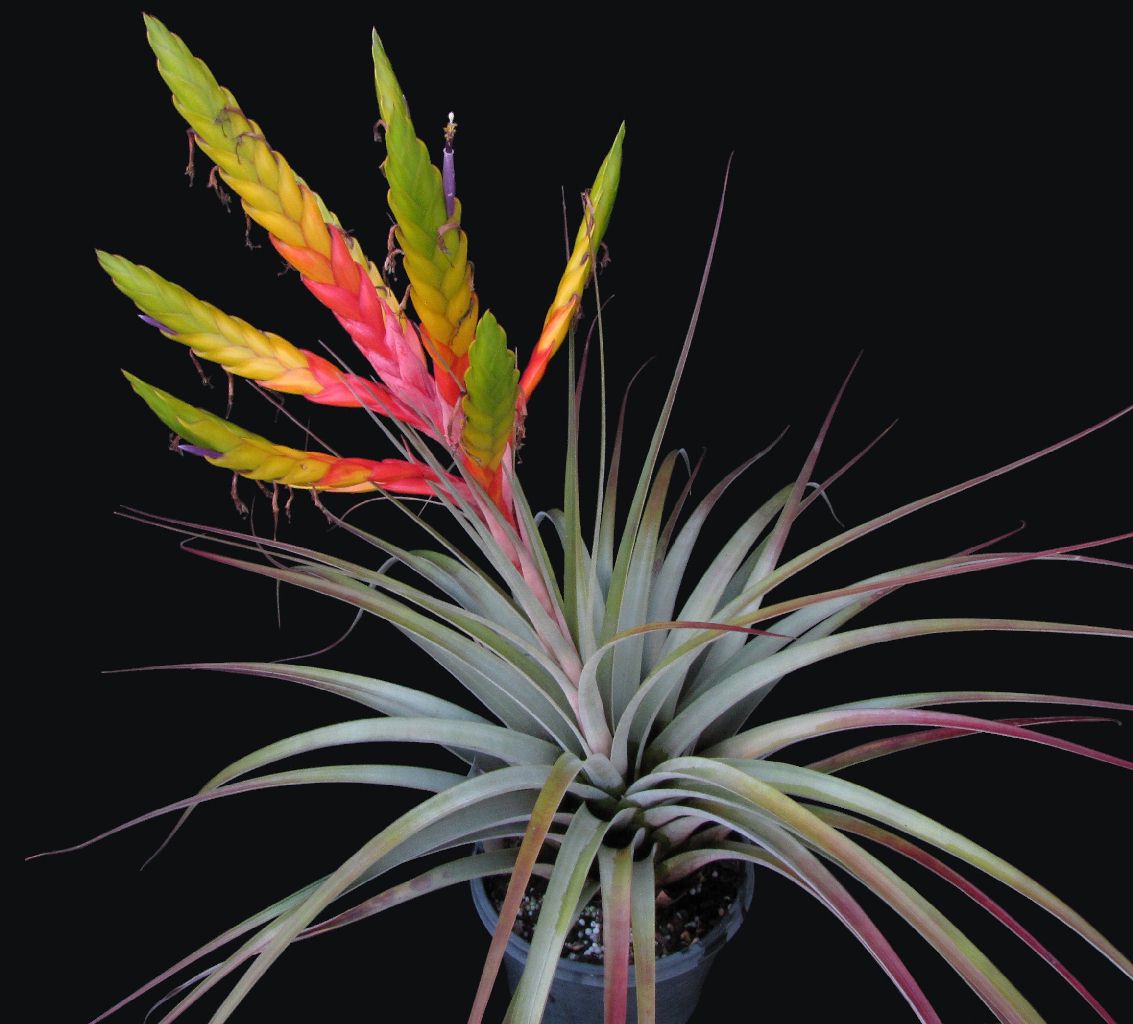
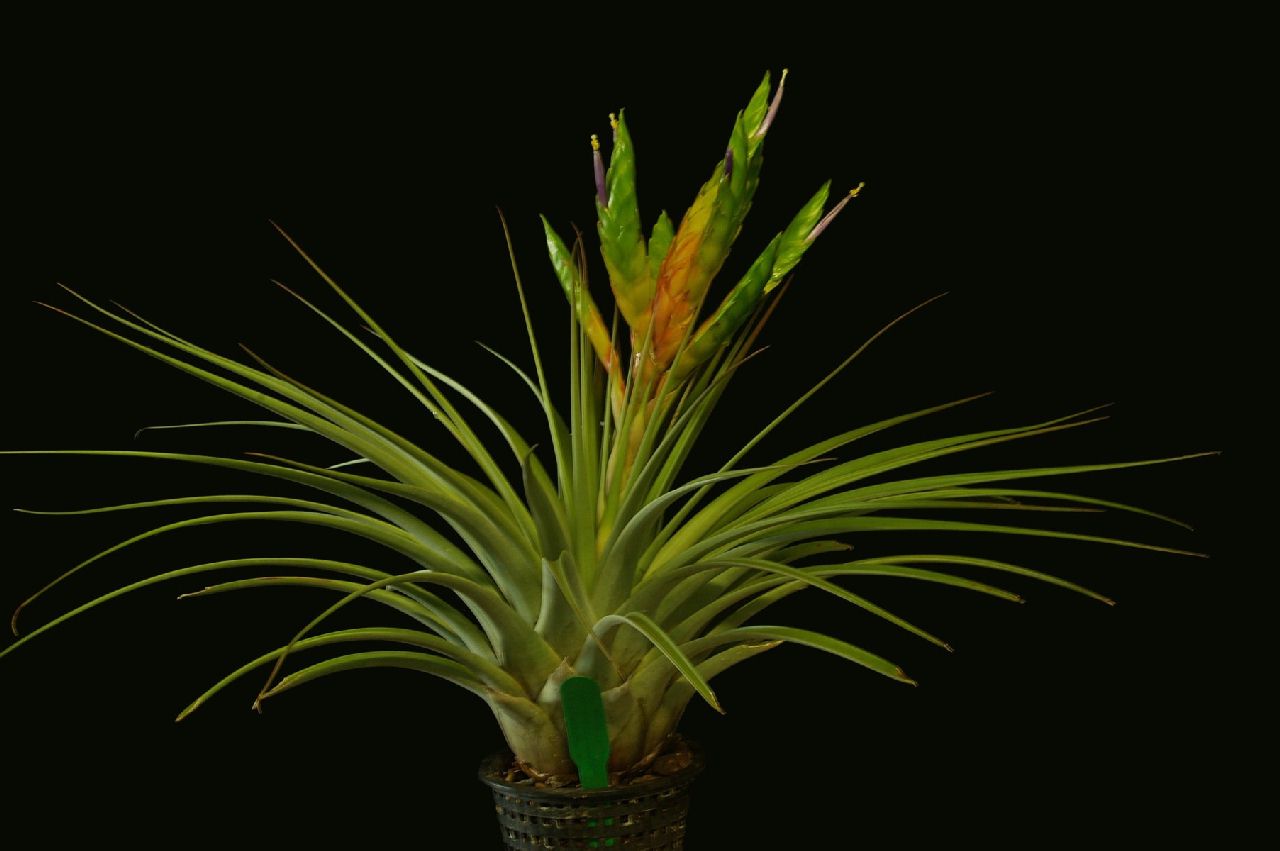
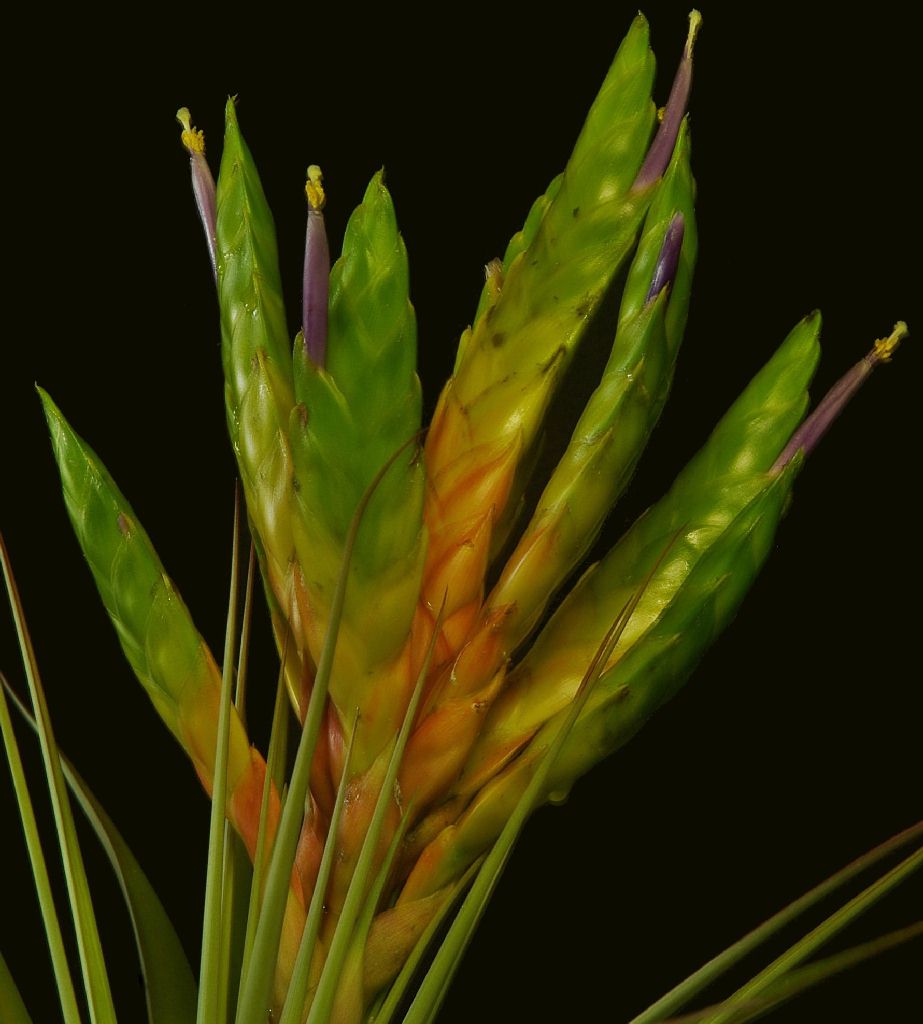
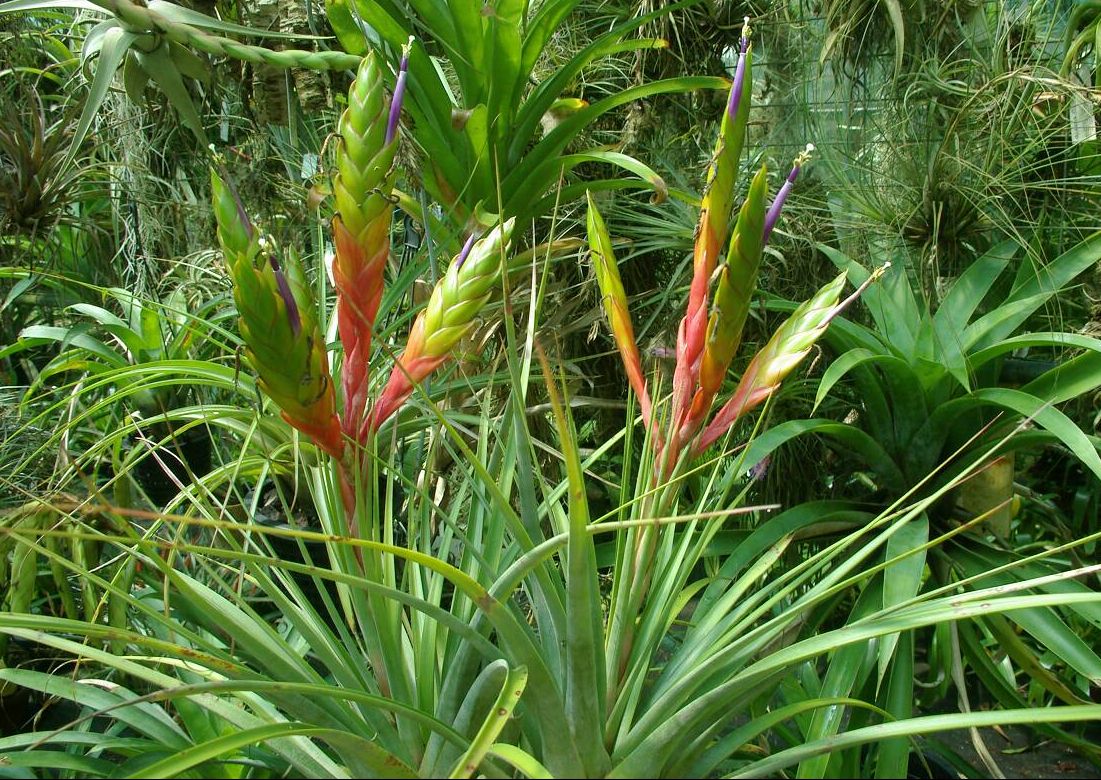
| 'Chacalapa' John Olsen |
var fasciculata 'Chacalapa' Mexico GA |
'Chacalapa' Peter Tristram |
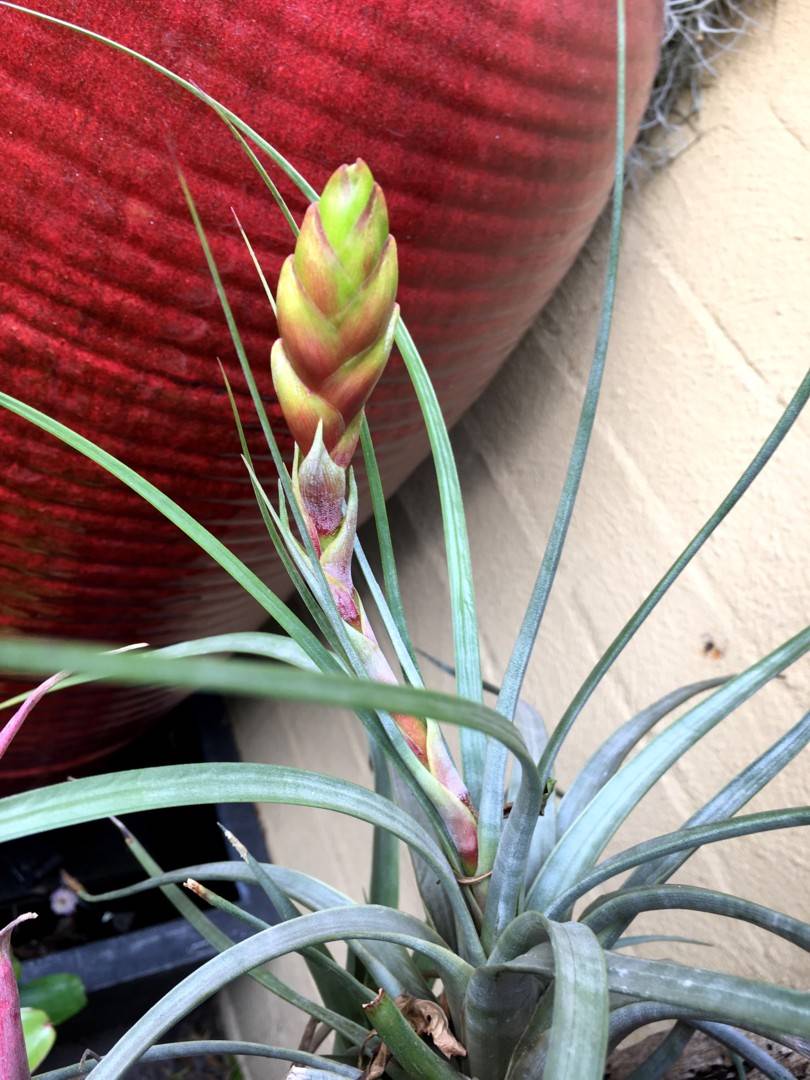
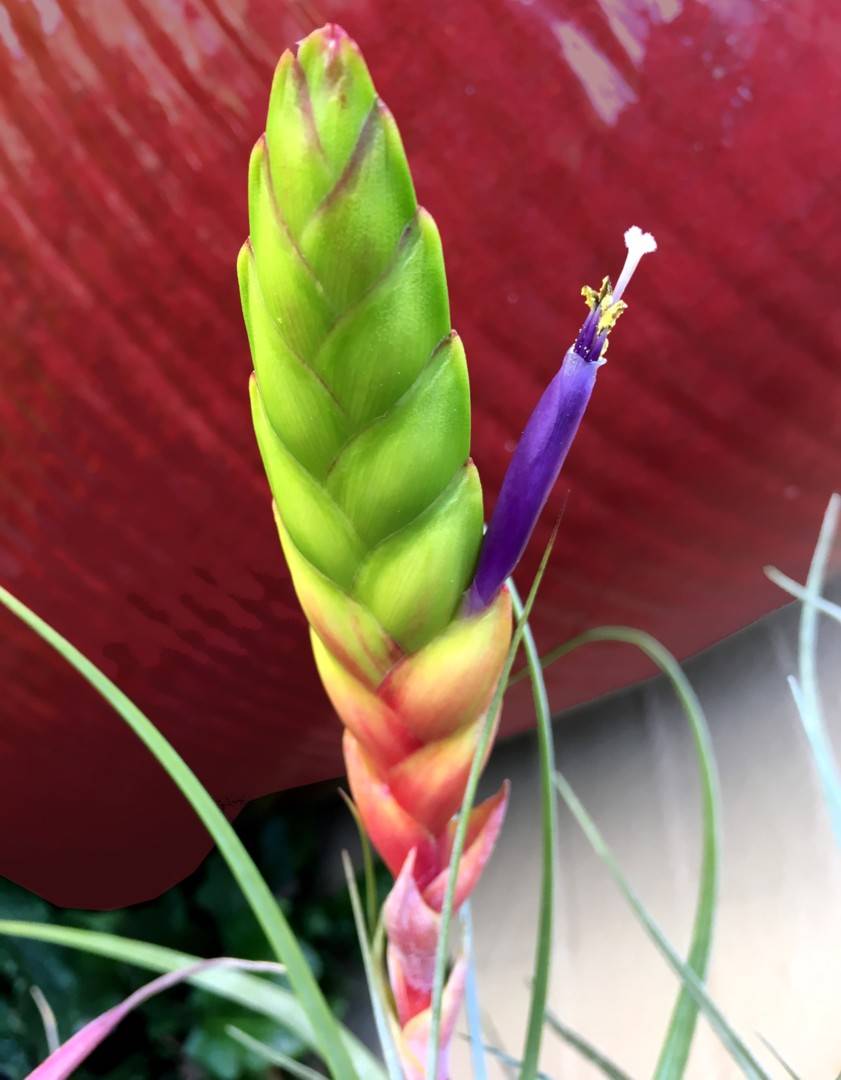
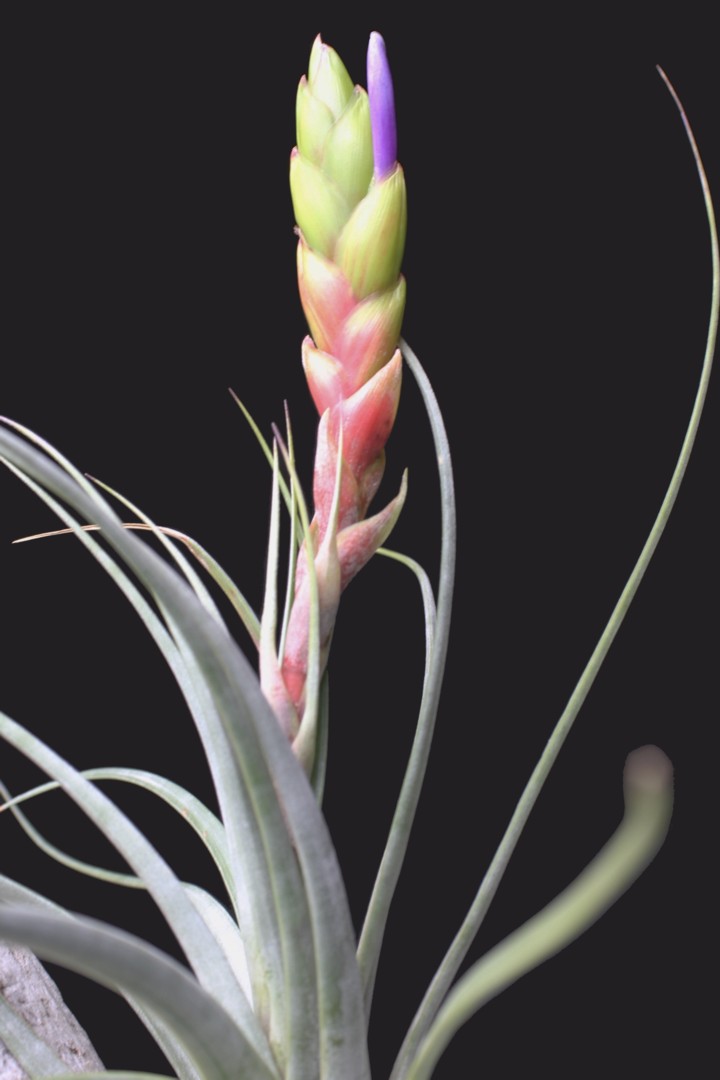

| Bryan Atkins 01/21 as 'Guatemala' |
Rob Bower 01/21 fasciculata(left) Compressor*(right) |
Bryan Atkins ... "I have this smallish plant labelled fasciculata Guatemala and I can’t seem to find much information on it. Looking for any suggestions as to wether this is a valid name or not, or any other relevant information I can attribute to it."
Chris Larson ... "This looks like one of the many plants imported under the name T. fasciculata "Tricolor" from the 70s to the time the imports stopped from the Americas in 2014. The name T. faciculata "Tricolor" was never registered, nor should it have been, but the Guatemalans shipped many plants all over the world under this name. These were never consistent, varying with each import. So many were sold as T. fasciculata ex-Guatemala or T. fasciculata 'Guatemala'. Hunderds upon hundreds came in over this time. So it is highly likely Guatemala is not a cv. name, but a detail of origin.
(If they had all been registered there would be hundreds of names for this group alone. The numbers the commercial nurseries imported of these is massive. I do not believe in lumping plants under an existing cv. name, because I have seen this happen over the years, and have seen the mess it has created. "Oh, it looks close enough to that photo", then you grow the real one side by side with the one you had lumped, side by side, & they are chalk and cheese. If I only had a dollar for every time I'd seen a mistake by people doing this .....)
I did separate one of these Guatemalan forms as T. fasciculata 'Front Cover', and registered it as such. There may be other Guate T. fasiculatas that others have registered.
The name T. fasciculata Guatemala just means it is another T. fasciculata from Guatemala. So it is not a cv. name - and therefore there will probably not be much information under this name."
Chris Larson ... "I had some interesting further email correspondence from Pamela Koide-Hyatt on this one:
First email: I agree with all your comments here on this small tillandsia that was sold by many names, especially T. fasciculata v. tricolor. Many years ago after discussions with Harry Luther we decided that this was just T. compressa. It is a little smaller than the T. compressa that I have seen in Mexico. So that is what we call it.
Second email (in response to me saying I found all the fasculata confusing): All the fasciculata aff. are very confusing. I suspect that someday many will be published with species names. They are so different geographically, so I try to separate them by their locality. But sometimes even on the same tree you can see different colors and forms growing together. The compressa types are distinct with their slightly inflated simple spikes. There are also lots of things sold as compressa that probably are not.
Yes, I have seen the Guatemalan compressa branch on occasion, usually only one other branch, they present in an upright way, not laterally. I have seen the same branching with the Mexican one from Occozocautla and the one from Jamaica.
This to me makes sense. Bryan's plant could be considered T. compressa. These sometimes branch as Pam says.
Bryan Atkins ... "Thanks for passing on this information. It’s very gratifying receiving so much information and history from a simple question regarding a plant’s identity. After some searching I managed to find a photo of the T. compressa (Guatemala) from BRT and visually it does looks similar to mine."
Peter Tristram ... "At least mark Guatemala on the label. I have plants from Selby, where Harry worked, labelled compressa ex Mexico, that Harry Luther later agreed weren’t compressa, something ü described, and restricting the species to the West Indes. He said the mainland species need further work, new names. Nothing is simply solved, not in the Brom world!"
Chris Larson ... "My tag would be something like: 'T. sp Aff. T. compressa ex-Guatemala'."
Andrew Flower ... "In NZ I imported hundreds of these from Guatemala, and after realising they were misnamed registered them as Tillandsia Compressor - see BCR Compressor."
Bryan Atkins ... "Well, this just gives me more to think about but to include all about the name in regards to Pete’s and Chris’s suggestion I might need a bigger tag. I checked my plant against the T. ‘Compressor’ and thought I was seeing double.....Albeit with a few minor differences."
Rob Bower ... "Heres a pic of compressa and a look alike magnispica on the left."
*Andrew Flower ... "Rob: The picture on the right is my image of the cultivar Tillandsia 'Compressor' - granted the name may be confusing, but this plant is NOT the species Tillandsia compressa, it is one of a number of plants imported from Guatemala and named incorrectly."
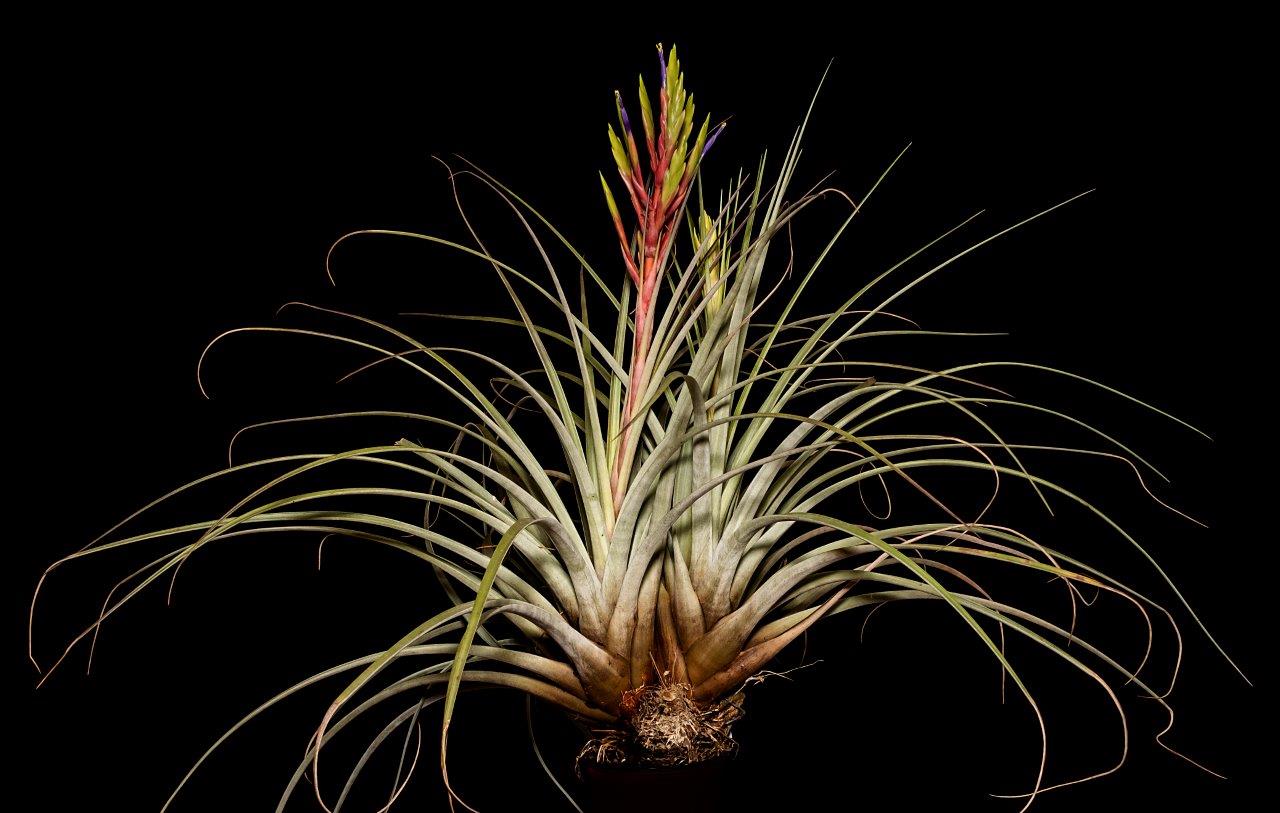


| Rob Bower 02/22 var densispica (NR5) |
Rob Bower ... "Some pics of quite a plain fasciculata but still worthwhile. It has NR5 (Neville Ryan) on the label and I got it from John Olsen."
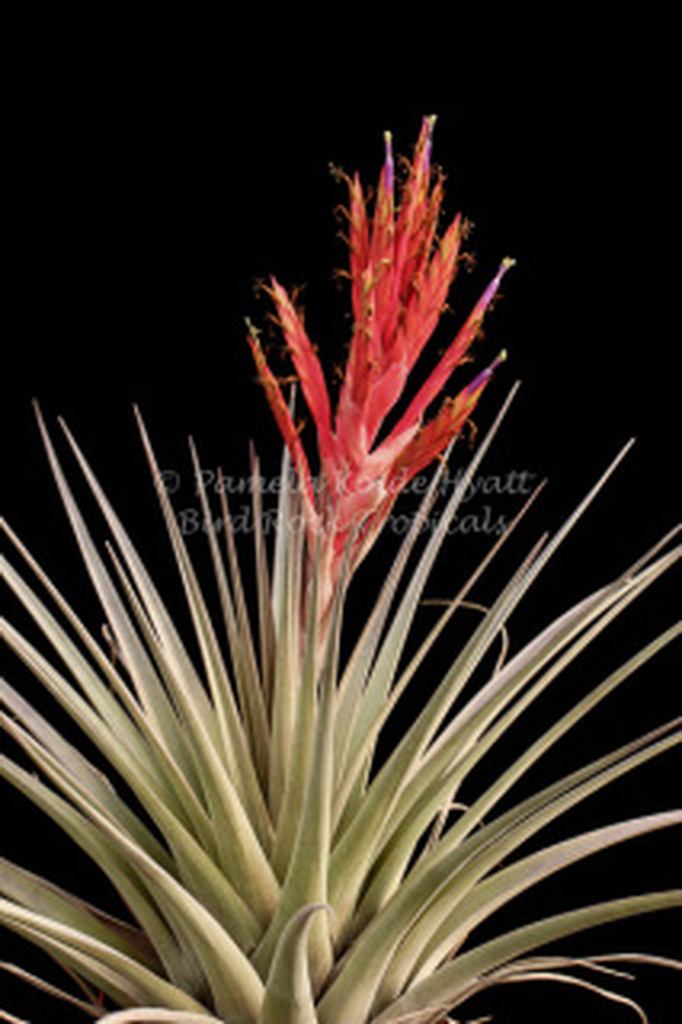

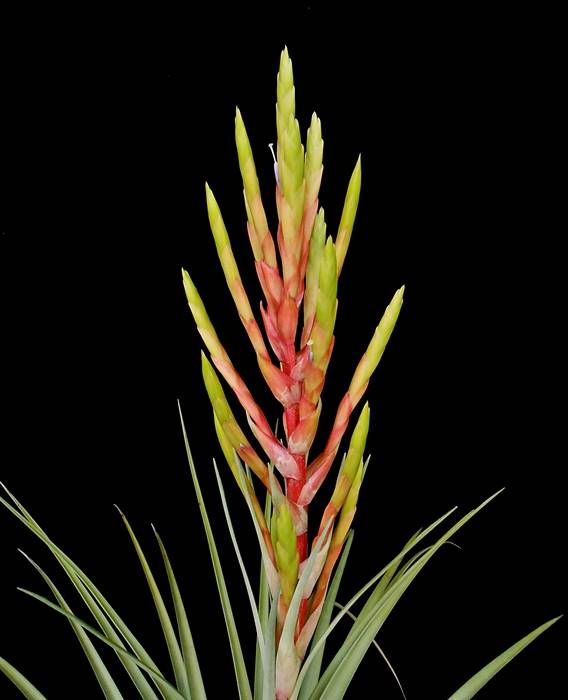
| Greg Aizlewood 02/22 var densispica T070, Florida |
Greg Aizlewood 02/22 inopinata Elm |
Greg Aizlewood ... "Hi Rob, I have some images for comparison which may help. The Nev Ryan number is our best chance at getting close to an accurate Aust ID. Nev is having some issues locating his list of fasciculata at present. In the interim I have attached some images from other sources which may be of assistance. The last photo is of T. inopinata.
Any one else whom may have some info please jump in."

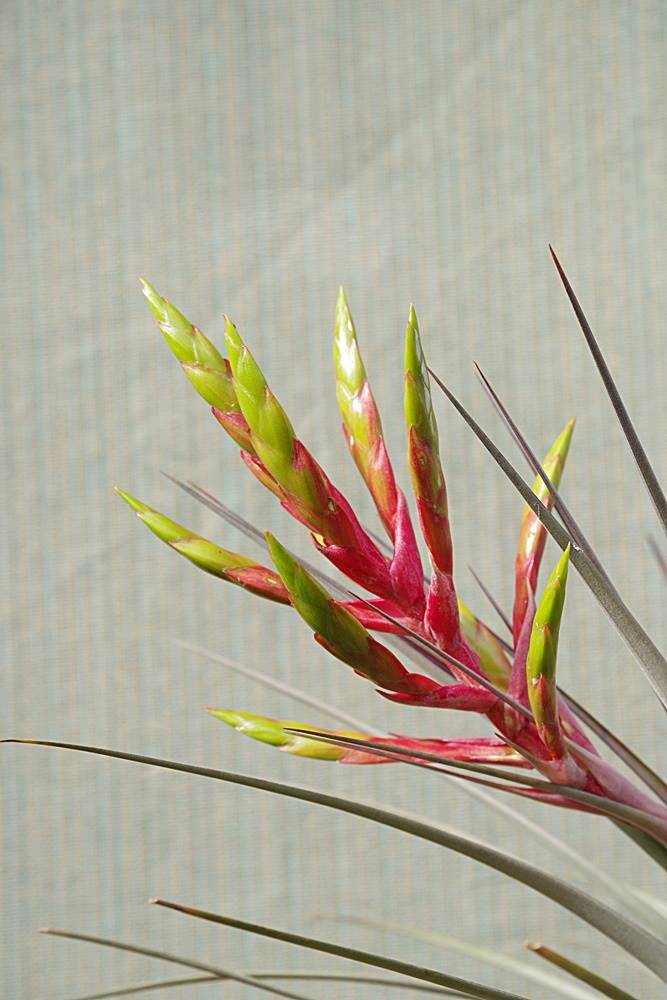
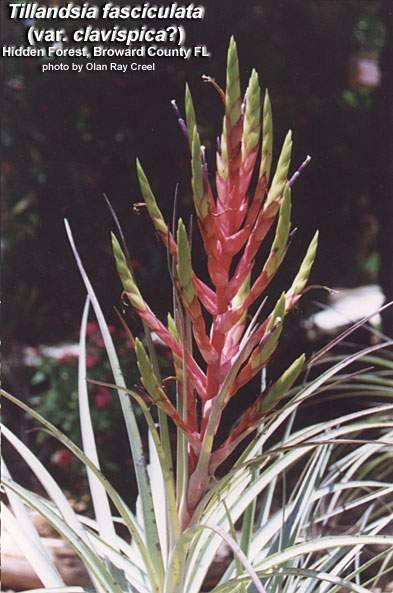
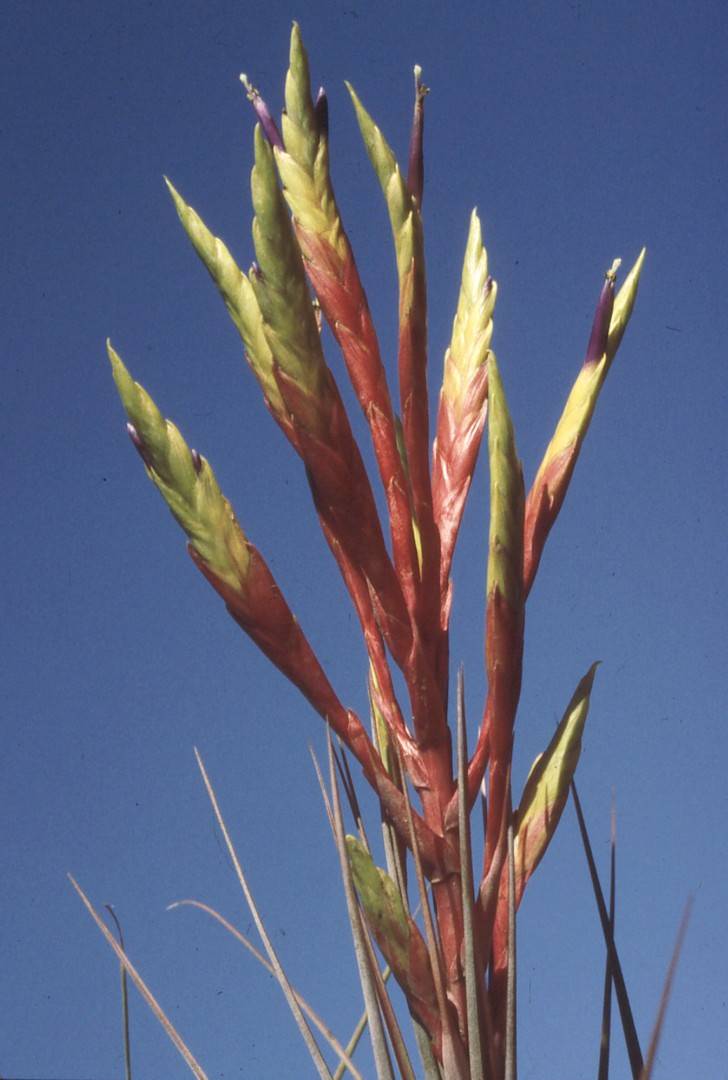
| Greg Aizlewood 02/22 fasciculata, Florida |
Greg Aizlewood 02/22 as fasciculata var clavispica |
Greg Aizlewood ... "Hi Rob, I found another that may fit, "Florida"?. If we can establish from Nevs records where it came from, either Florida or Mexico, we may have a chance to get closer."
Rob Bower ... "Thanks for the set of pics. I have a few to contribute if youre putting together a collection. My pics look a bit like the clavispica in your pics – but I don't have any reason to think its not densispica as labelled."
Greg Aizlewood ... "Glad to be of some help. I can only suggest or offer up some visual reference so that you can get some idea of what is out there and get some sort of continunity on the ID for these in Aust. so we are all on the same page. I believe Nev's number system is a good starting point and from there we can hopefully get some info on where he got his plants, which I believe were supplied by either Chris or Peter(who have excellent records) and from there establish some provenance. I hope Pam Koide is listening in, as I think a lot were supplied through Bird Rock Tropicals over the years."
Greg Aizlewood ... "I have been communicating with Pam Koides regarding a fasciculata which has been running around Australia for some time under various names. On the Till disc it appears as T. Fasciculata Oaxaca (photo by Len Colgan), in my collection as T. fasciculata NR 26 and then on Pams Web Site as Tillandsia fasciculata Oaxaca T330. Here are some photos for comparison.
For your perusal and discussion."
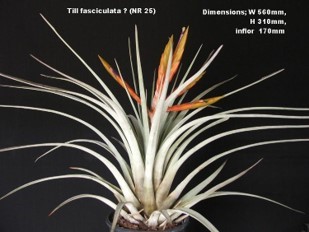
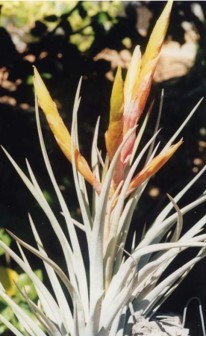


| fasciculata No. 26 |
fasciculata Oaxaca BRT 330 |
fasciculata Oaxaca L.C. |
Ed. 01/25* ..."T. fasciculata 'hondurensis' was given a temporary cultivar name, 'Hondurensis', but has now been described as a new species T. lenca, but not yet listed on the Taxon."
Key to the Varieties of Tillandsia fasciculata in S&D
1.Spikes rarely less than 1dm long; floral bracts 35mm long or longer --> 2
1.Spikes, or at least their fertile portions, rarely over 1dm long; floral bracts scarcely more than 25mm long --> 5
2. Floral bracts even or at most faintly nerved toward apex --> 3
2. Floral bracts prominently nerved, beaked, drying dark = var venosispica
3. Spikes strongly complanate --> 4
3. Spikes but slightly complanate = var convexispica NOW fasciculata
4. Spikes erect = var fasciculata
4. Spikes nodding, secund = var pendulispica
5. Spikes clavate with long slender bracteate sterile bases = var clavispica
5. Spikes short-stipitate or subsessile --> 6
6. Inflorescence ample --> 7
6. Inflorescence few-branched or simple --> 8
7. Floral bracts coriaceous, glabrous = var densispica
7a. Floral bracts greenish white, petals white = forma alba
7. Floral bracts thin-coriaceous, somewhat lepidote = var floridana (NOW HYBRID)
8. Spikes lax = var laxispica
8. Spikes dense; floral bracts strongly incurved or cucullate --> 9
9. Primary bracts ovate, the lower ones caudate or acuminate; spikes linear-lanceolate = var uncispica
9. Primary bracts suborbicular, apiculate; spikes ovate = var rotundata (NOW SPECIES)
Tillandsia fasciculata Group
Ever since Lyman Smith published Flora Neotropica Part II in 1977 we have seen Nurserymen giving names to special forms of T. fasciculata which had been found in the wild. There are also plants from private collections that have not been formally identified as well as hybrids within the complex. Some have been registered, some not. It is difficult to link these names with some of the new species described since 1977, because botanists rarely refer to cultivar names or nurseryman’s names in their notes. Therefore it is possible that these cultivar names are part of the following species. We leave you to decide!
Tillandsia fasciculata complex according to Brian Sidoti and Kenneth Cameron at Monocots Conference 2013.
acostae, beutelspacheri, compressa, copalaensis, fasciculate, fasciculata v. clavispica, fasciculata v densispica, fasciculata v. densispica forma alba, fasciculata v. venosispica, flavobracteata, grossispicata, gunther-nolleri?, hubertiana, inopinata, kuzmae, jalisco-monticola, magnispica, marabascoensis, polita, rhomboidea, rodrigueziana, rothii, rotundata
trelawniensis, welzii , zoquensis. This entry 12/2013
Derek Butcher 18/08/17 .....remember that Adolpho only described T. inopinata in 2008 and he did warn :
"Notes-
For a long time the Mexican specimens of the genus Tillandsia L. with digitate-compound inflorescences were identified with the name of T. fasciculata Sw. However, extensive work of gathering in diverse parts of the country has allowed us to determine that, under this epithet, they grouped several different species in fact, among those that we can mention are T. maritima Matuda (1971), T. hubertiana Matuda (1975A), T. flavobracteata Matuda (1975B), T. jaliscomonticola Matuda (1975B) and T. rothii Rauh (1976), as well as T. marabascoensis Ehlers & Lautner (Ehlers, 1992), T. zoquensis Ehlers (2002) and T. macvaughii Espejo & López-Ferrari (2005), recently described. The inadequate application of the name T. fasciculata has surely been due to many of the characters in herbarium material being lost that allow us to distinguish the taxa appropriately with live plants, such as the number, the size, the colour and the form of the spikes, the consistency and texture of the floral bracts, the form of the rosette and the habitat. Mez, himself (1896) mentions that T. fasciculata was a polymorphic species and described seven varieties of the same one, using material from Mexico, the Antilles, Central and South America, and Florida in the United States. It is for the same reason that Smith and Downs (1977) in their Flora Neotropica recognized 10 varieties of T. fasciculata, two of them later moved to specific status by Gardner (1984).
The type specimen of Tillandsia fasciculata Sw. (O. Swartz s. n., BM!, S(x2)!), comes from Jamaica and it corresponds to plants of small size (Chart 1) with plump spikes, ellipsoid and more or less short pedunculate (Fig. 5c). In Mexico, the populations that have these characteristics are found only in the Yucatan peninsula (see Appendix) and the material coming from other parts of the country correspond to different entities, some of which have not been described to date. This is the case of the two taxa proposed here as T. grossispicata and T. inopinata:"
Chart 1 Table comparing the different characters in Tillandsia fasciculata, T. grossispicata, and T. inopinata
| - | T. fasciculata(s.s.) | T. grossispicata | T. inopinata |
| Spike length | 6-11.5cm | 6-19cm | 11-26.5cm |
| Spike width | 1.5–2.4cm | 3-4cm | 1.2-2cm |
| Spike thick | 4-5mm | ca. 1cm | 3-4mm |
| Spike form | ellipsoid | oblong-ellipsoid to ellipsoid | oblanceolate to long oblanceolate |
| Number of spikes per inflorescence | 3-9 | 2-5 | 6-12 |
| Plant height | 35-45cm | 40-50cm | 60-150cm |
| Spike peduncle length | 1.5-3.4cm | ca. 1cm | 3-8cm |
| Floral bracts | smooth, nerved solely toward the tip | conspicuously nerved | smooth, nerved solely towards the tip |
| Filament length | 3.5-4.5cm | 7.2-7.8cm | 6.3-7.2cm |
| Petal length and width | 6cm x 5-6mm | 6.6cm x 8.5-11mm | 5.7–6.1cm x 8-8.5mm |
| Sepal length | 2.4-2.5cm | 3-4cm | 2.8-3.2cm |
| Sepal union | 2/3 of length | ½ of length | 2/3 of length |
| Geographic distribution | Yucatan, Campeche, and Quintana Roo | Colima, Guanajuato, Jalisco, and Michoacan | Tamaulipas, San Luis Potosi, Guanajuata\o, Queretaro to Hidalgo |
Updated 18/01/25






















































